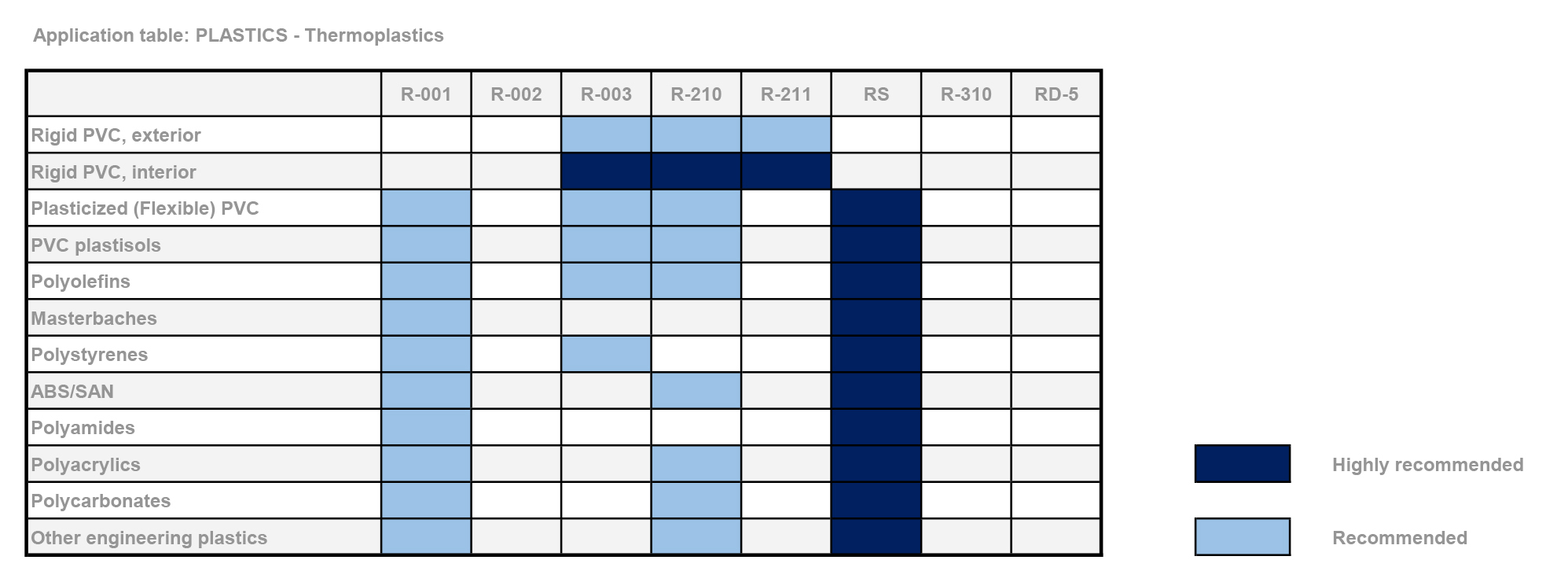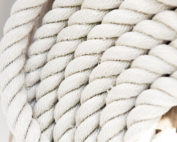The industry of plastics uses a significant and continuously growing part of production of titanium dioxide pigments (approximately 25%). Plastics owe growing demand due to relatively low production costs or high resistance respectively, high durability and resistance to corrosion and aesthetical virtues. Therefore plastics more and more often squeeze out traditional materials: wood, steel, etc.
Pigments used in the Plastics Industry:
The majority of more than 50 types of plastics is transparent and colourless. Some of them are used in a transparent state.
An unquestionable majority needs pigmenting to give the final products non-transparency and adequate colour.
Chemical inertness, ability of UV radiation absorption and outstanding optical properties of titanium dioxide decide that it is an ideal pigment ensuring hiding power and used in the majority of products made of plastics. Good dispersibility, neutral colour shade, high hiding power and ability to increase the resistance of pigmented products against action of increased temperatures or atmospheric factors are required from titanium dioxide pigments used for pigmenting of plastics. Due to the above reasons rutile brands are commonly used, and anatase pigments are used only in cases, where neutral shade and low abrasion are required. The quantity of used pigment in relation to the weight of a pigmented product is relatively low (in comparison to coatings) and normally does not exceed several percent (this quantity is sufficient to ensure expected non-transparency). However, due to the size and dynamics of production of plastics, consumption of titanium dioxide pigments within this sector of industry is large and plays more and more important role.
Thermoplastics
The production of thermoplastics consumes about 90% of titanium dioxide used by the whole plastics industry. It results from great popularity of plastics composing this group: polyvinyl chloride, polyethylene, polypropylene, polystyrene, etc.
From among titanium dioxide brands, two brands in this group meet with the greatest interest:
- brands highly resistant to atmospheric conditions specifically surface-treated for this purpose with silicon oxides, aluminium oxides and sometimes zirconium oxides;
- brands of low resistance against atmospheric conditions, surface treated only with aluminium oxide.
The first of them – thanks to high resistance – are used in products exposed to strong action of light – or more broadly – to atmospheric conditions (e.g. window frames, siding, floor coverings, etc.).
The latter ones are used for pigmenting of products not exposed to prolonged action of atmospheric conditions, often of short time of use (foils, buckets, containers, kitchenware, disposable cutlery, etc.).

Thermosetting plastics
Application of titanium dioxide in thermosetting plastics is not as significant as in the case of thermoplastics. The majority of thermosetting plastics either due to their properties or due to the application conditions of their application need to be pigmented with titanium dioxide brands of adequately high resistance to light or atmospheric conditions. A detailed selection of brand should be preceded by a scrupulous analysis of specific properties and application of a plastic.

KNOWLEDGE BASE
TITANIUM DIOXIDE – application
Titanium dioxide, known as titanium white, is the most important and most widespread inorganic pigment. It is used in a wide range of products we use every day, giving them appropriate apperance: the color, opacity [...]
Where to find TiO2 in daily life?
Titanium dioxide, also known as TiO2, is one of the most common pigments and is used as a basis for all colours, to give the brightness to paints, printing inks, paper, plastic products, foods, cosmetics, [...]



